INTRODUCTION
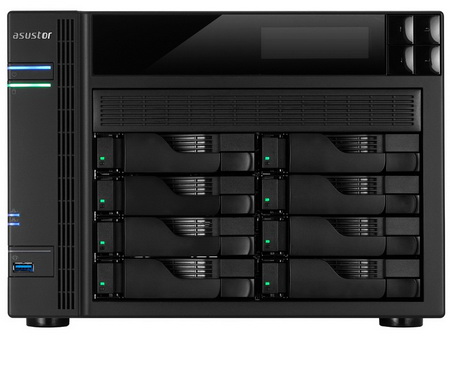
With most people out in the market looking to find a cost-effective NAS server for home/office use (media playback, downloading and IP surveillance are the three primary reasons most people want them for) we naturally tend to do our best to get entry/mid-end solutions on our test bench mostly. However from time to time we also have to cater to the needs of the more demanding consumers and enterprise users who are after high-end models packing enough punch and features for a variety of heavy uses. ASUSTOR may just be around for roughly 2 years but through their very good products so far they've made it quite clear that they are here to stay so it was just a matter of time before people started to ask from us to test their top NAS Servers. Well we obviously listened and so today we will be taking a very thorough look on their latest 8-bay NAS Server the AS-608T.
Founded in 2011, ASUSTOR Inc. is a leading innovator and provider of private cloud storage (network attached storage) and video surveillance (network video recorder) solutions. We are devoted to providing the world with unparalleled user experiences and the most complete set of network storage solutions possible.
The AS-304T which we reviewed a couple of weeks ago is a very good NAS server but the AS-608T simply blows it away both in terms of firepower and available features (as expected since we are talking about a higher end line). As a matter of fact the AS-608T is amongst the most advanced NAS Servers to have ever landed on our test bench so that alone is quite impressive. So aside the very fast Intel ATOM 2.13GHz Dual-Core CPU (D2701 model combined with the Intel GMA3600 based on the PowerVR SGX 545 IGP) the AS-608T comes with 1GB DDR3 RAM (by A-DATA in our sample) which this time over is expandable to 3GB (unlike the RAM in the AS-304T which is soldered to the motherboard and can't be extended). On top of that add the front LCD panel, 6 USB ports (4xUSB 2.0/2x USB 3.0), two Gigabit Ethernet ports, HDMI version 1.3a port and 8 SATAII/III bays compatible with both 2.5/3.5" drives and you've got yourself one very powerful NAS Server. Since our AS-304T review ASUSTOR has also performed some updates to their ADM software suite so we expect even better things this time so without further delay let's see what the AS-608T can do.
SPECIFICATIONS AND FEATURES

PACKAGING AND CONTENTS
Just like with the AS-304T the AS-608T arrived inside a plain cardboard box with the company logo at the front along with the words network, cloud and storage repeated over and over.
Again the same words are repeated on all sides.
The large sticker at the front informs the consumer about the hardware specifications of the unit in the box and its contents.
A thank you message along with a message pointing to the installation instructions can be seen once you open the top of the box.
The unit is wrapped inside a plastic bag and placed between two thick Styrofoam spacers while the rest of the bundle is placed inside a small cardboard box right next to it.
The bundle is once again not very rich but it does contain 2 Ethernet cables, power cord, software CD, quick start guide and two small bags with mounting screws for 2.5/3.5" drives.
THE AS-608T EXTERIOR
The AS-608T is an 8-bay NAS Server so it goes without saying that it's quite large (293mm in Length, 230mm in Depth and 215.5mm in Width) and quite heavy (6.2kg).
To "illustrate" just how large it is we placed the 4-bay AS-304T and the 2-bay AS-202TE (review pending) ontop of each other (depth is the same for all 3 models).
The ASUSTOR logo is placed right above the on/off power button and the power/HDD activity LEDs.
Bellow those we see two Ethernet activity LEDs and a USB 3.0 port part of the 1 touch backup feature.
We see the usual perforation on the left side of the chassis.
The AS-608T features a very useful LCD screen at the front along with 4 navigation buttons (we will dedicate one page for that later on).
All 8 drive trays are placed horizontally and aside the very nice release button mechanism they also come with individual activity LEDs.
The drive trays are made by aluminum and can accommodate both 3.5" and 2.5" drives.
The rear certainly looks larger than the front.
Here we find two 120mm exhaust fans, power port, 40mm PSU exhaust fan, USB 3.0 port, two eSATA ports, two Gigabit ports, four USB 2.0 ports, HDMI port and a Kensington lock.
The device sits on 4 large and removable round plastic/rubber feet.
THE AS-608T INTERIOR
Opening the chassis is not hard you just need to remove three screws from the rear.
ASUSTOR has placed a 250W PSU by Delta Electronics inside the AS-608T which should be more than enough to power all 8 drives (it could probably power three times as many). Unfortunately due to time restrictions we were unable to go any deeper (we did see that it also uses 1GB DDR3 RAM by ADATA) but if we manage to do so we will update the review later on.
LCD SCREEN
We usually don't pay much attention on front LCD screens since they just show some tiny bits of information but the LCD used with the AS-608T is not just for show so you can use it along with the 4 navigation buttons to check the available space of the drives, see the IP assigned, perform 1-touch backups, monitor temperatures, shutdown/restart the NAS, change the name and adjust the network settings.
SETUP
Typically prior to using the device we really suggest heading over to the official ASUSTOR support page to download the latest firmware and software versions (v2.0.4.RBM1 was used for this review).
The easiest and fastest way to setup the unit is to launch the control center software, wait until it locates the NAS in your local network and then double click on it.
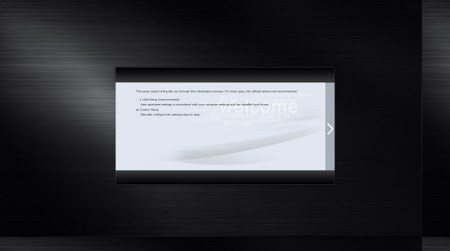
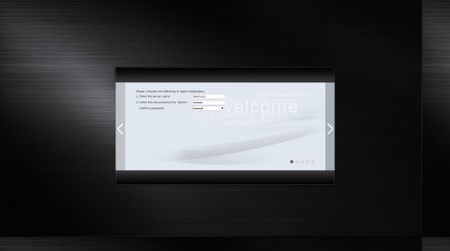
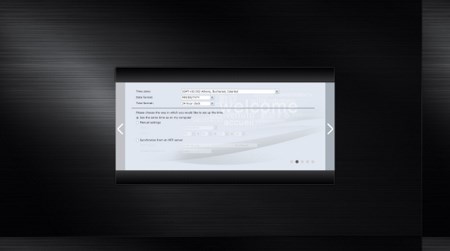
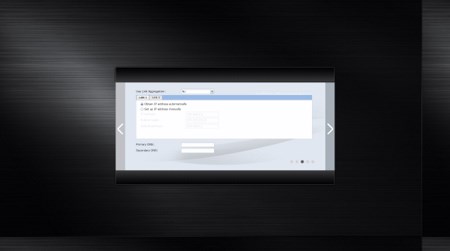
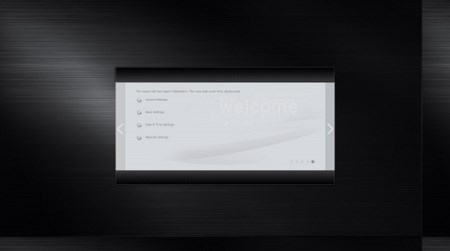
That will launch an explorer window in which you will need to set the password, time zone, language and network options in order to proceed.
You can also create a new ASUSTOR id if you don't already have one to get official support and be able to download applications and use the cloud connect service (we already had one so we used that instead).
WEB INTERFACE PART 1
The login screen of the ASUSTOR Data Master operating system shows both the name you've assigned to the NAS and the model (picture).
The main screen shows us that only the basic applications are installed and as ASUSTOR explained to us they don't install any extra ones by default since not everyone may need them so they leave that selection to you (the New Page at the bottom can also be renamed).
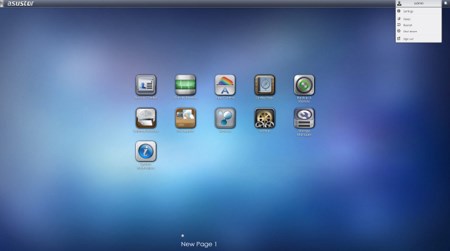
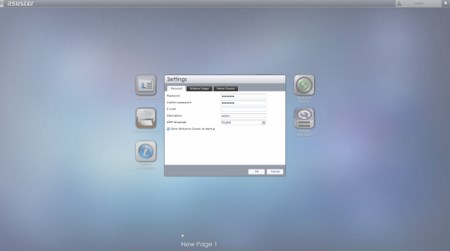
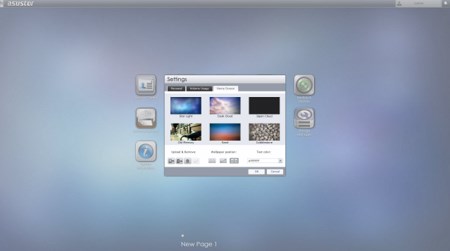
You can access the layout settings menu and logout, restart or shutdown the NAS from the admin selection on the far right of the top bar.
Typically from the Access tab you can add/remove user accounts, groups, domain users, domain groups and also gives you the ability to create shared folders and set application privileges.
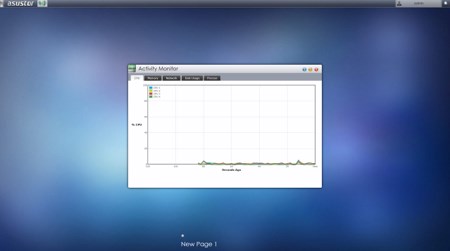
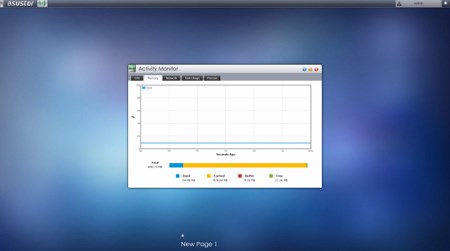
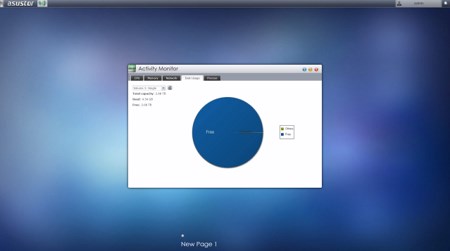
From the Activity Monitor tab you can check the available space on the installed drive(s), monitor the CPU/Memory/Network utilizations and see what processes are currently running.
The Backup & Restore tab allows you to remote sync options, setup FTP/External backups, configure the one touch backup (front USB port), use the cloud backup feature and also adjust the system settings.
Moving to the External Devices tab from here you can check the state of attached drives, format them, prepare them for ejection and you can also check the state/adjust the settings for attached printers, Wi-Fi adapters and UPS devices.
The File Explorer page allows you to upload and download files from and onto the NAS without much effort.
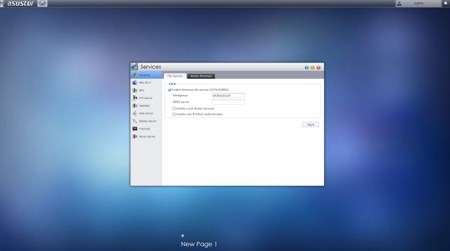
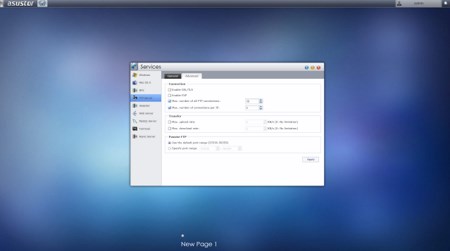

The Services tab includes several server options for Windows/Mac OSX/NFS/FTP Server/WebDAV/Web Server/MySQL Server/Terminal and Rsync use.
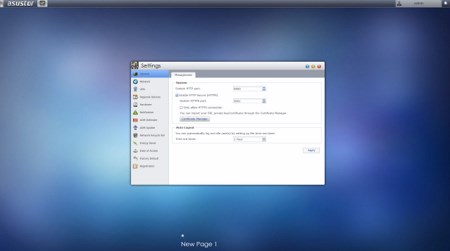
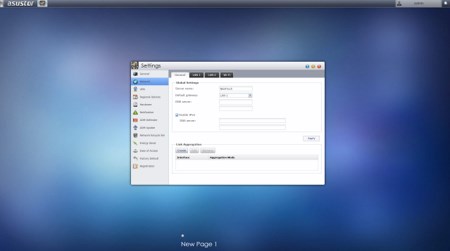
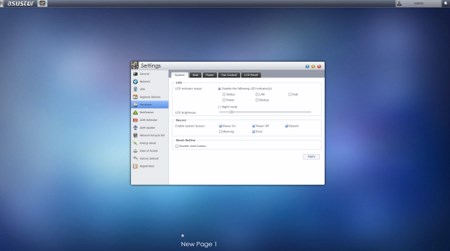
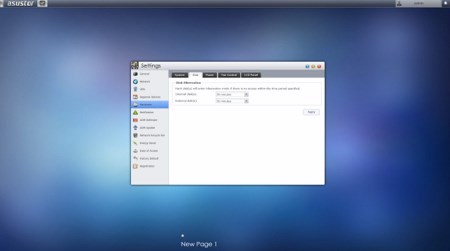
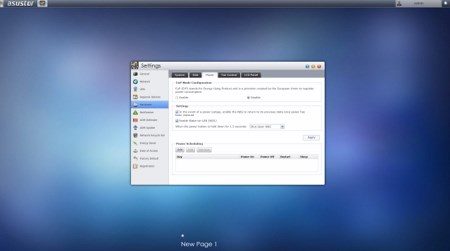


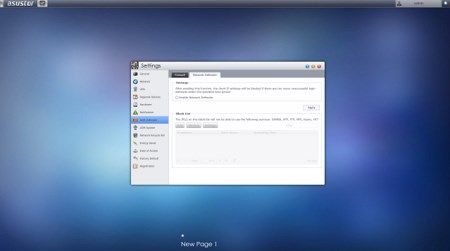
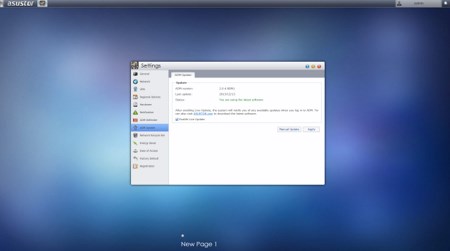
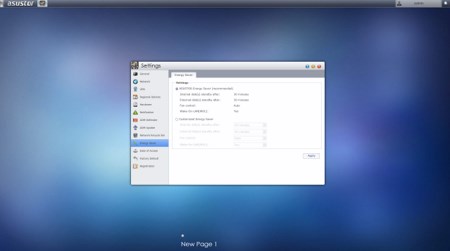
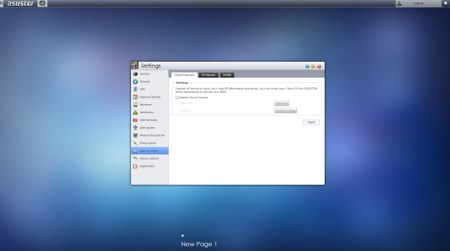
Under the settings tab ASUSTOR has placed pretty much everything you can adjust including the network settings, regional options, hardware options (LEDs/Buzzer/Fan control/Power settings/LCD text), various notification options, ADM defender (firewall), ADM update (manual or automatic), network recycle bin, energy saver (drive standby mode/fan control/wake on LAN), ease of access (Cloud Connect/EZ Router/DDNS), factory default settings and product registration.
WEB INTERFACE PART 2
Via the Storage Manager tab you can create and manage volumes (JBOD/RAID), check the state of the drives via SMART and use the iSCSI feature.
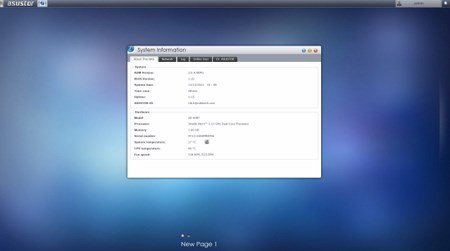
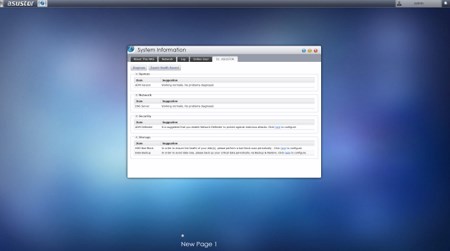
The System Information tab allows the end user to check the state of the hardware components of the NAS (including their temperatures), check the network activity, read logs, see who's logged in and use the DR.ASUSTOR diagnostic tool.
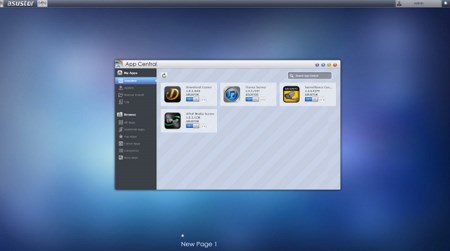
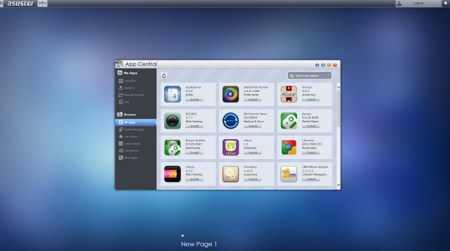
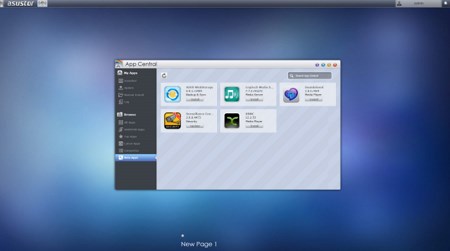
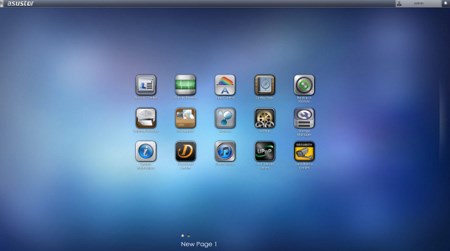
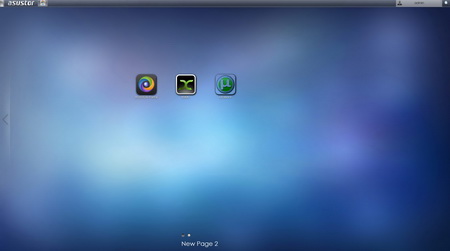
The App Central menu is kinda self-explanatory so from here you can see the installed applications, see the recommended apps by ASUSTOR, check all available applications (over 100), check for application updates and of course add/remove applications. We did install some applications which we will go through later on (the new applications are placed on the main screen).
I was somewhat surprised to see that the Download Server tab allows you not only to download files using the BitTorrent Client or directly from HTTP/FTP but you can also use it for Thunder/FlashGet/QQDL downloads (you can also use the Download Assistant software to manage all the download tasks running on your ASUSTOR NAS from within Windows).
Once again however not all is perfect and although the Surveillance Center has a very nice and feature-rich design along with an updated list of support IP cameras it’s still nowhere close to what QNAP or Synology offers with their solutions. To be more specific version 2.0.4 only supports a limited number of models by just 13 manufacturers and as such we were unable to use it with any of the 3 IP cameras that we have here by TRENDnet, Airlive and Zavio.
XBMC SOFTWARE
The XBMC app is not really something new and as always you can control the XBMC application either by using the ASUSTOR remote control (acquired extra), mouse/keyboard or Android Application.
We did receive the remote this time so all our reviews from this point regarding XBMC on ASUSTOR devices will be done with it.
If you happen to install extra applications aside just the XBMC you will see them at the initial screen once the AS-608T starts (in our case you can choose between Boxee, ADM, Chrome, YouTube and XBMC).
It may not belong in this page but i was quite surprised to see that you can also launch the ADM OS via HDMI.
The XBMC application transforms the NAS Server into a media server so it can do whatever an HTPC can do aside playing games that is.
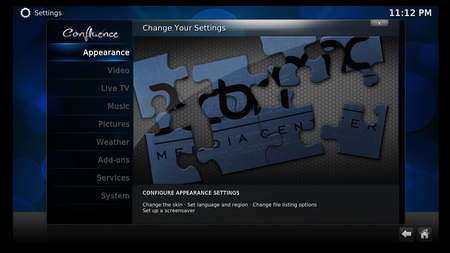
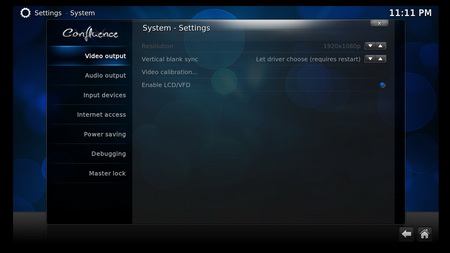
You can personalize the XBMC application quite a bit (for example change the skin of the menus and set the region/language/audio language options).
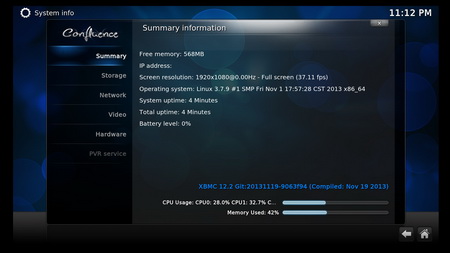
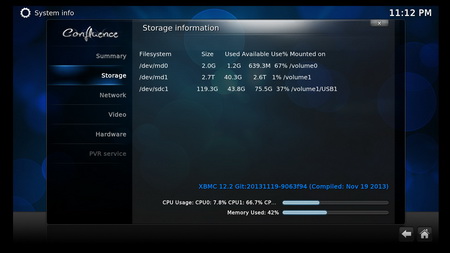

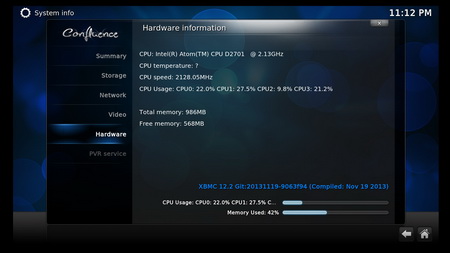
You can also check the various hardware/software information screens and of course adjust video and audio settings.




Usually we test XBMC with our Blu-Ray MKV rip of Pacific Rim which is around 27GB in size but for the AS-608T we took things a step further and so we ripped our Blu-Ray of Avatar S.E resulting in a 42GB MKV file (slightly higher bitrate than Pacific Rim). Now what's quite interesting is that either the AS-608T or this version of XBMC allowed us to take screenshots from within the software and that's a lot more accurate than taking shots with a camera. Unfortunately as you will see in one of the screenshots the playback was not smooth at all times and although i really doubt many people will be using 40GB MKV files i do think that some tweaking of either XBMC or the units firmware is in order.
ANDROID/IOS APPS
ASUSTOR has several applications available for Android and iOS compatible devices including the AiMaster which you can use to access most unit functions, AiDownload from where you can adjust and monitor all downloads and the AiData which obviously allows you to access files stored in the NAS (we recommend using the auto discovery with each app) . ASUSTOR also has the AiRemote application from where you can access the media functions of the NAS but on one hand we are expecting for AiRemote2 to debut and on the other using the remote control seemed faster and easier.
TESTING METHODOLOGY – TEST RESULTS
Since some of the NAS servers/devices we have tested in the past are no longer in our possession (naturally) we will keep performing the exact same testing methodology we did in the past for as long as possible in order to provide accurate comparison results. So as always we will be using a single Seagate Constellation ES.2 3TB SATA III hard disk drive with the unit at hand (just like with all of the NAS servers) and perform several upload/download tests with a single 10.9GB file. Tests are repeated a total of 4 times after which we record the average numbers (from the 4 peak ones) into our charts. Finally the network device used is the same Netgear DGN3500 Gigabit ADSL2+ Modem/Router we always use when performing tests on NAS servers.
FILE TRANSFER TEST

A single 10.9GB file was uploaded and downloaded to and from all the NAS units in this test. The results here are extremely good since not only is the AS-608T the fastest NAS Server in our Database in read speeds but it's also the 5th fastest in write speeds.
TEMPERATURES

The two 120mm fans managed to keep the HDD at 26 degrees at all times and only once did it hit 28 degrees for just a couple of minutes (still we had to record that number as the highest one).
POWER CONSUMPTION

Power consumption is quite high but we are talking about a high-end 8-bay NAS server so i think it's actually quite reasonable.
NOISE LEVELS

Although at full speed the two 120mm fans far exceed the 55dBA mark (you can set that inside the settings/hardware panel to check it out) during testing we never recorded anything over 45.8dBA.
CONCLUSION
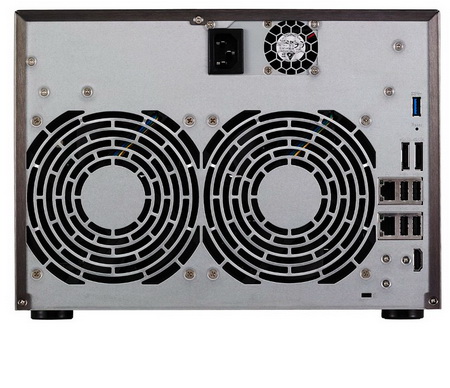
At the end of our review of the AS-304T NAS Server a while back we were very impressed with the how far ASUSTOR has managed to go inside such a short time not only when it comes to the specifications and performance of the unit at hand but also because of their very good looking and user friendly ADM 2.0 OS. Well the AS-608T takes things into a whole new level not only because it's obviously faster and its RAM is upgradable up to 3GB but also because it offers space for up to 8 drives and packs a lot more features than its smaller brother. Now i was a bit surprised to see that the AS-608T comes with HDMI Version 1.3a and not 1.4a like the AS-304T so it can't playback FullHD 3D media but that's something i doubt will concern potential buyers since at the end of the day we are talking about a NAS server aimed towards professionals and enterprise users.
With a current price tag set at USD859 inside the USA (Amazon.com) and at 805Euros inside the EU (Amazon.co.uk) the AS-608T NAS Server by ASUSTOR is certainly not cheap but it's actually roughly 20% cheaper compared to its counterpart from QNAP (TurboNAS TS-869 Pro) and 10% cheaper than its counterpart by Synology (DiskStation DS1813+). Of course in the end it all comes down to what exact features you are after, which brand you trust more and which OS you like more but ASUSTOR offers a solid solution that costs less than the competition and at the same time offers pretty much the same features, has almost identical performance levels and uses a very good OS. Because of all of the things mentioned we feel that the AS-608T may not be the perfect NAS Server but it's still well worth our Golden Award.
 PROS
PROS
- Excellent Build Quality
- Excellent Performance (Speed/Temperatures/Noise Levels)
- Features
- 8 Bays
- 1GB DDR3 RAM (Expandable To 3GB)
- 2 Gigabit Ethernet Ports
- 6 USB Ports (2xUSB 3.0 / 4xUSB 2.0)
- HDMI Output
- RAID 0/1/5/6/10 + Hot Spare Support
- SATA III (6Gb/s)
- ADM OS
- Android/iOS Apps
- Price (For Some)
CONS
- Limited Support For IP Cameras (Currently)
- HDMI 1.3a (Can't Playback FullHD 3D Media)
- Power Consumption (For Some)

 O-Sense
O-Sense





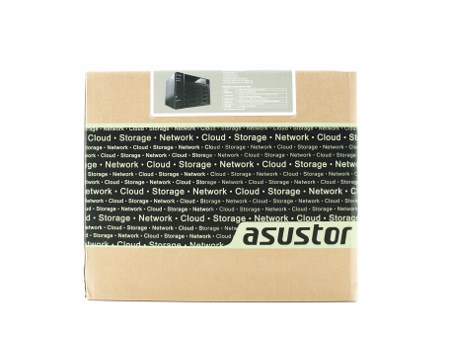
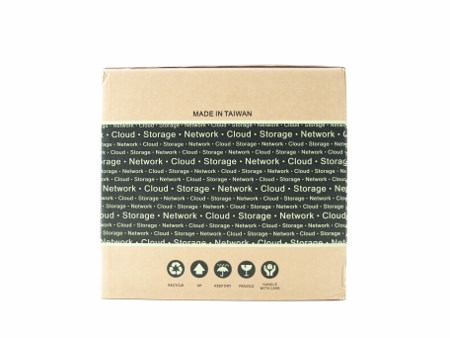
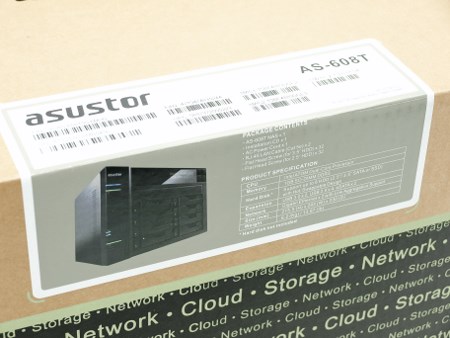

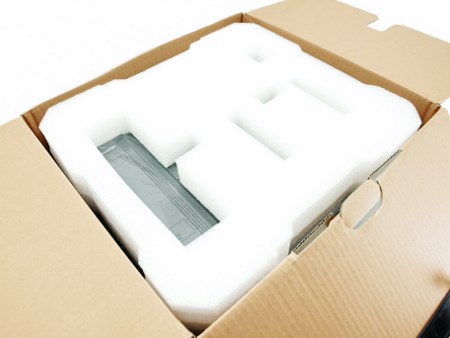
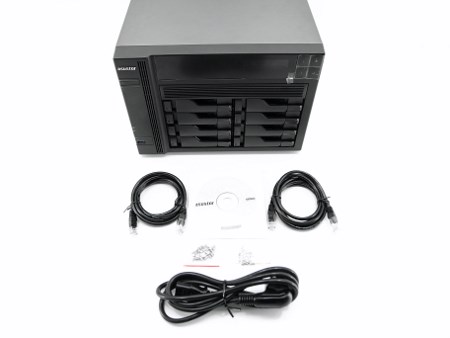
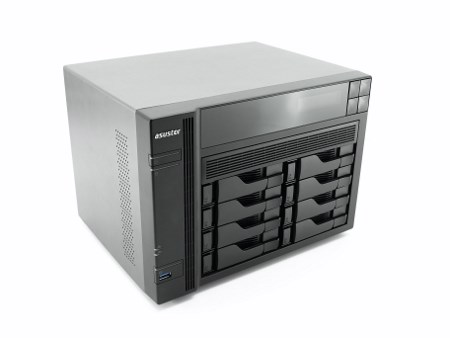
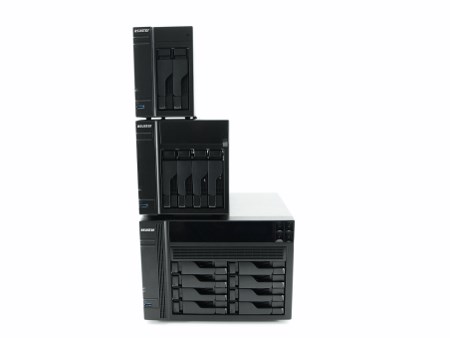
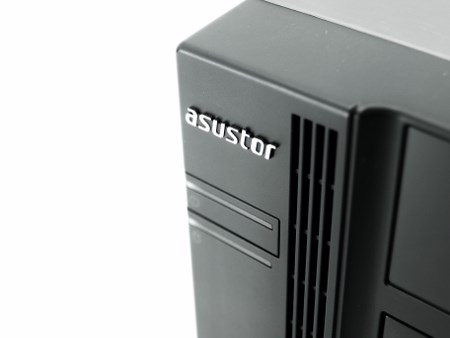
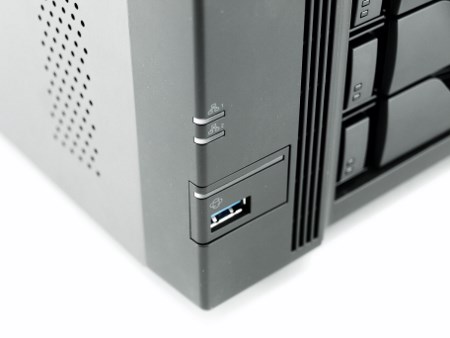
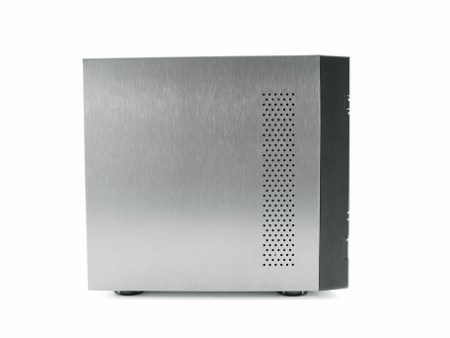
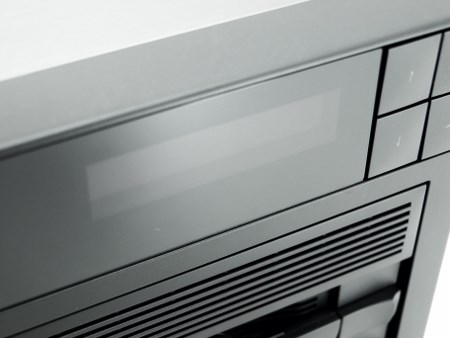
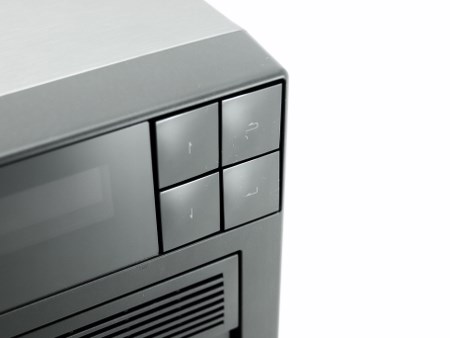
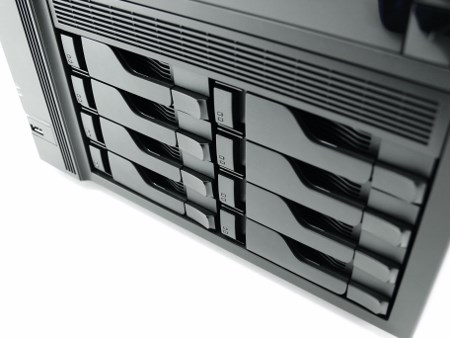
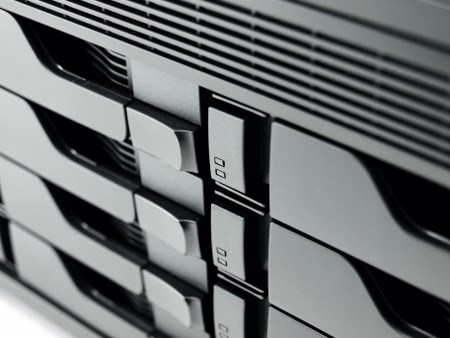
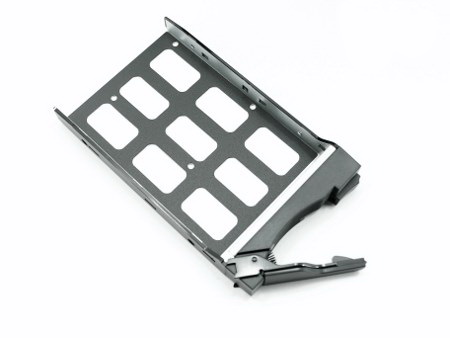

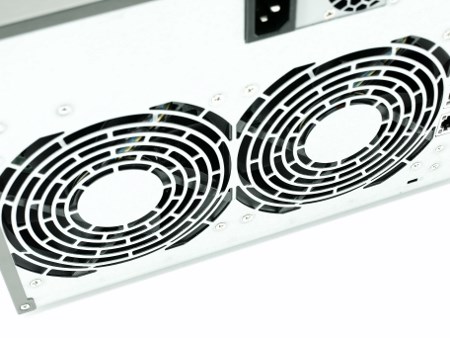
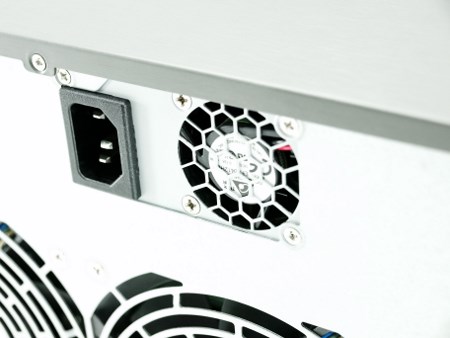
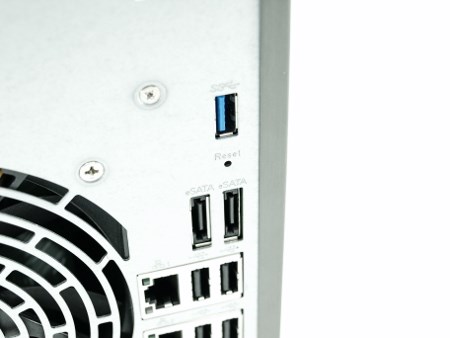
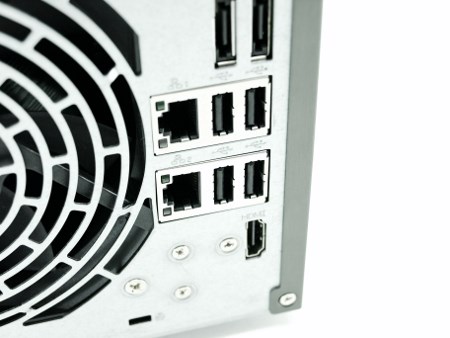

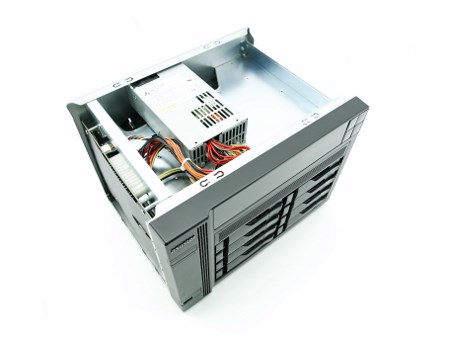
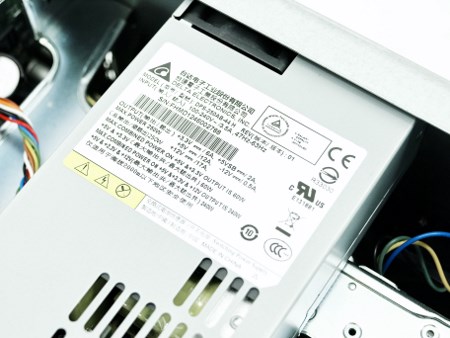
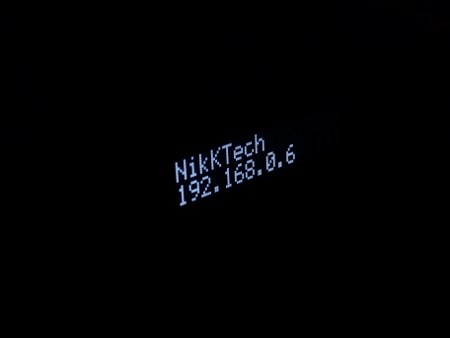
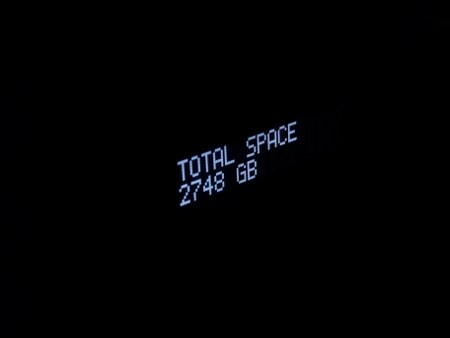
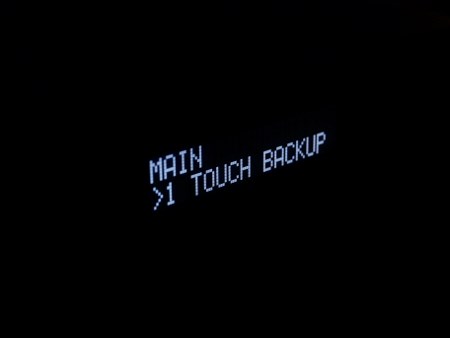
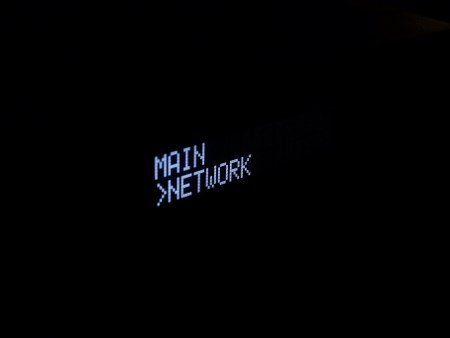
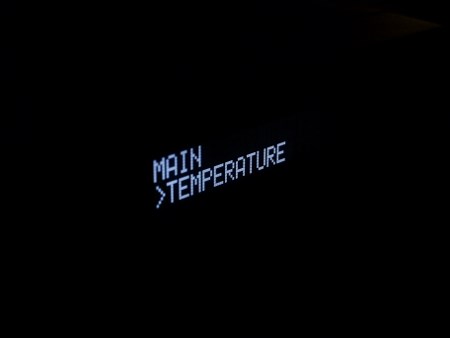
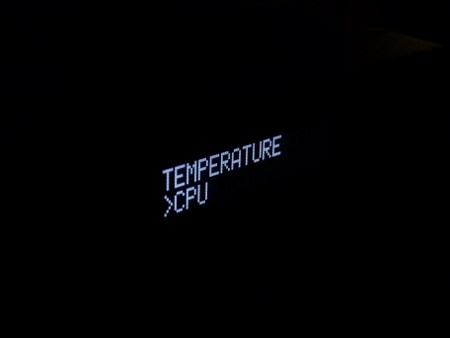

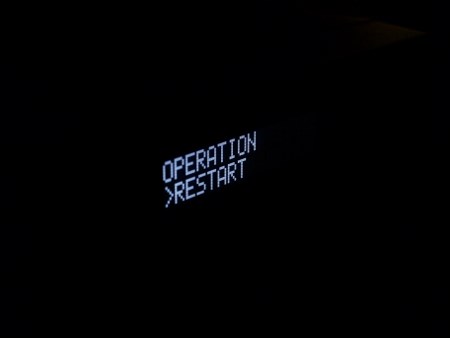
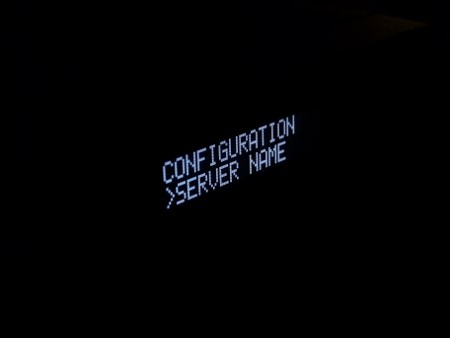
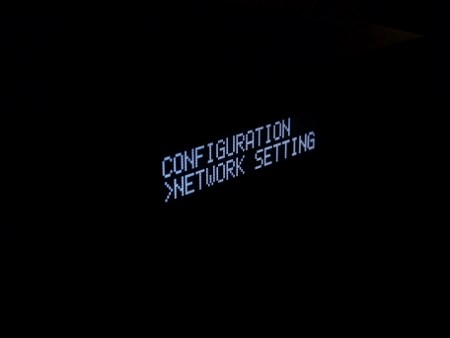
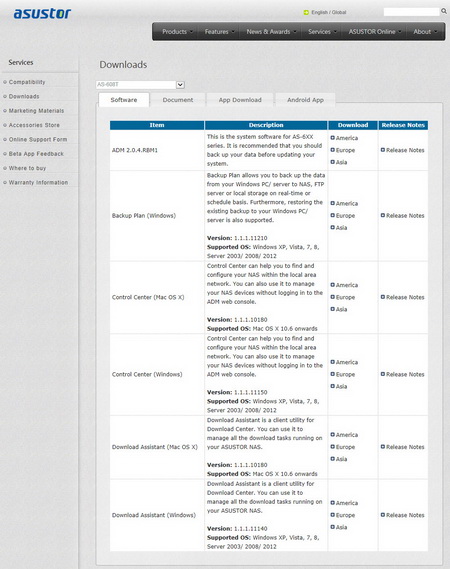
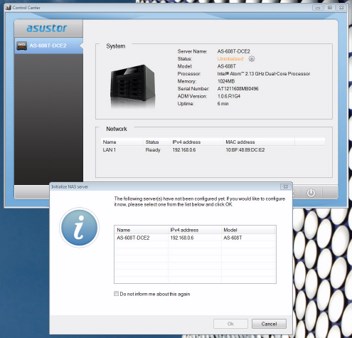

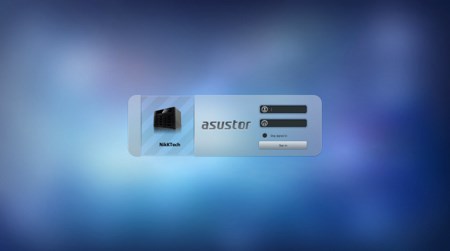
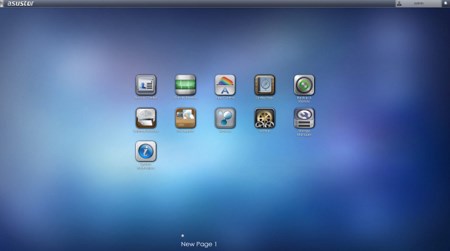
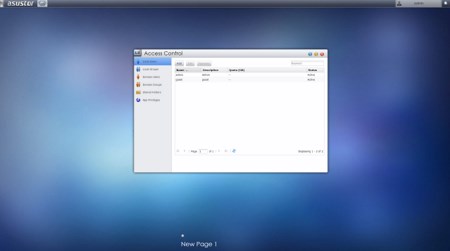
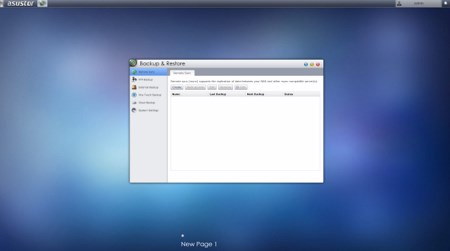
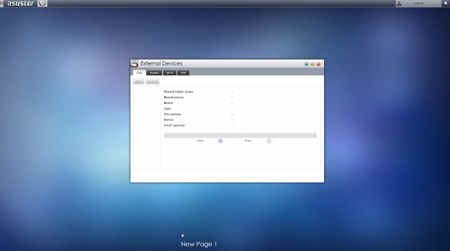

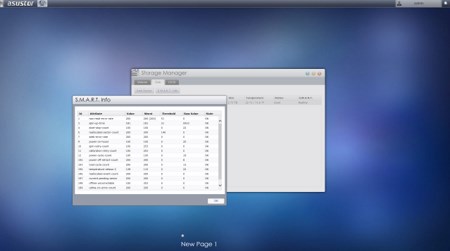
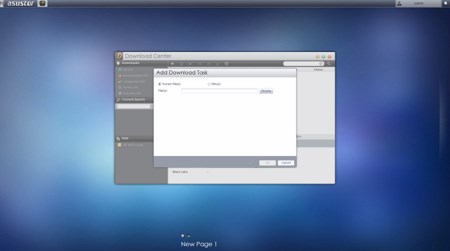
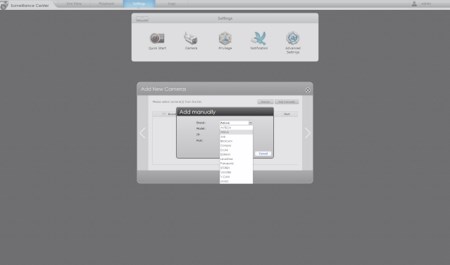

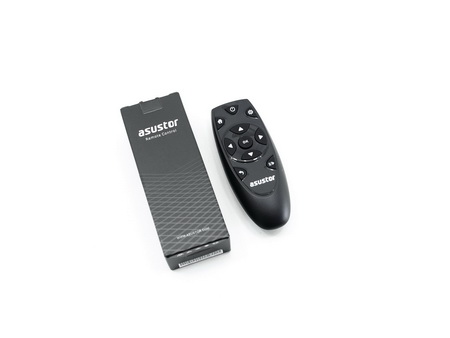


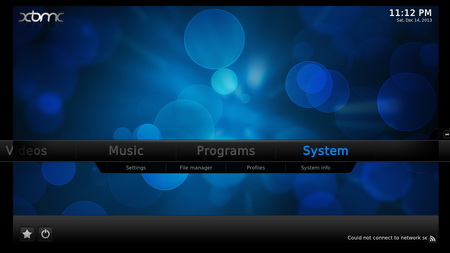
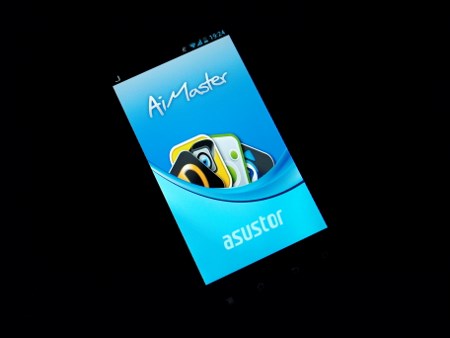
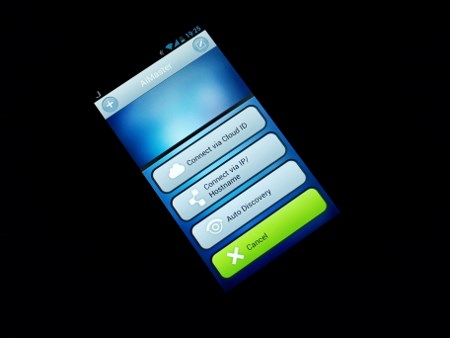
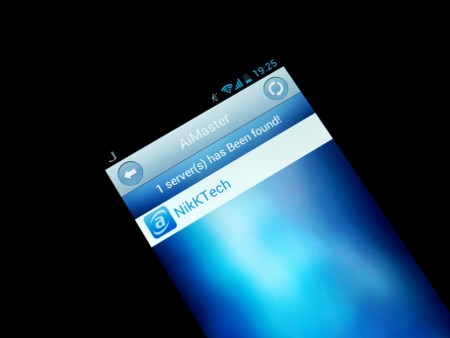




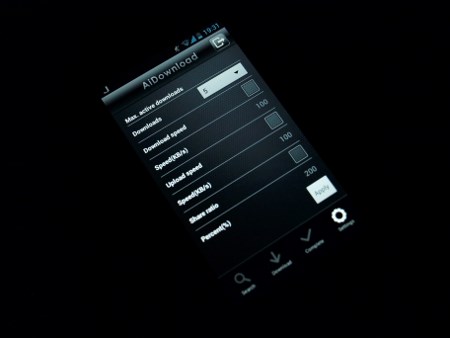


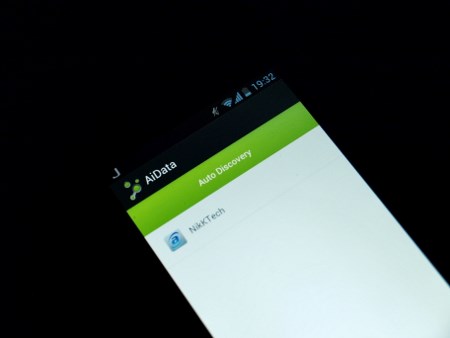
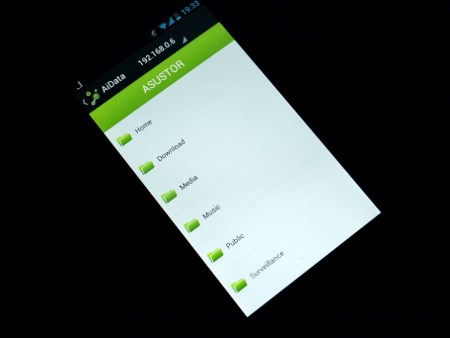


.png)

